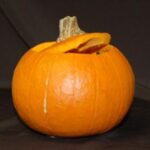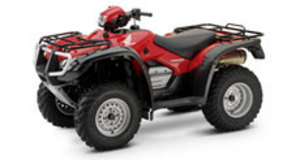Fall is upon us again! Its the time of year when you see carved pumpkins on porches with candle-lit faces. The pumpkin is a member of the Cucurbitaceae plant family that includes gourds and melons. Pumpkins seeds from around 5500 B.C. have been discovered in Mexico along with other ancient seed discoveries in North America. Pumpkins come in a dizzying variety of sizes, shapes, and even colors. From the tiniest adorable pumpkin “Jack Be Little” at a mere three inches long to the “Atlantic Giant” that can grow up to weigh hundreds of pounds.
Growing Small Pumpkins
First, you need to know what all pumpkins require, and that being full direct sunlight. Make sure your future pumpkin patch/large container is situated in a place that easily gets a lot of sun. And the seeds should be planted only after all danger of frost has passed. Pumpkins, especially small ones, aren’t tolerate of cold. With small pumpkins you can easily plant them in a large container or in the ground. As for the ground, plant 4 to 6 seeds about seven inches apart from each other in a small mound with good fertile soil. Soak the seeds the night before you plant them so the shell softens, making it easier for the sprouts to break through. Pumpkins require well composted soil packed with nutrients (thats why keeping the weeds out is important, too, so they won’t be stealing any nutrients). Surround all hills with a 4 inch deep moat so the roots will always have easy access to water. It is important to keep your pumpkins well watered.
The roots of pumpkins are rather delicate while still a sprout-ling so be careful not to disturb them. In about a week or more young tender leaves emerge from the ground. Pumpkins have a long growing season so it will be many more weeks before you see the characteristic tough green vines vigorously growing about. And small pumpkins can grow on fences instead of the usual ground. In fact, small pumpkins can do very well on a fence/pole that gets a lot of sunlight. It also makes a great natural Autumn decoration. The small ones don’t require as much maintenance, however, they still need good soil and direct sunlight for proper growth. Pumpkins do produce large orange flowers in mid-July that last for about two days. Its natural for these flowers, which are female and male on the same pumpkin, not to stick around for long.
Caring For Small Pumpkins
Now small pumpkins don’t need nearly as much room as the large ones, a big container about the size of a standard tub should be good enough if your going to plant them that way. The small pumpkins are easier to care for because they don’t need as much nutrients. On small ones as well as the big ones the giant leaves collect water by the gallons. Planting in clay soil can also lessen the amount of time you’ll need to spend watering. Clay is the best soil for retaining water. Some pumpkins may be so small they end up getting lost in the soil or other plant growth so make sure you keep count of how many pumpkins are developing on the plant. Pruning may be useful for keeping the vines under control and a generally good appearance.
Pumpkins reproduce by pollination and seeds. And handle a developing pumpkin as little as possible along with avoid walking too close to the plant as this can disturb their long root system. Small pumpkins usually have no trouble developing in the re-known classic pumpkin shape but still it might be useful to make sure the flat bottom area is sitting squarely on the ground or their off the ground entirely and hanging on the vine. This helps them keep their shape. By Fall the pumpkin is ready to be picked from your yard. It can be any color on the yellow-red spectrum range from lightest yellow to bloody red.
Uses For Small Pumpkin
Generally, pumpkins can be used for many things such as carving to pumpkin pie and other pumpkin dishes. They contain a high nutritional content in the form of vitamins A, C. E and other nutrients like antioxidants, beta-carotene, selenium, and magnesium. They can also be painted, used in cosmetics, hold flowers, be used as a bowl, and don’t forget to save the seeds for next year so you can plant some more. With small pumpkins the possibilities are limitless as well. You can put floral foam in them and create a flower arrangement. The small ones are especially good for painting as its rather difficult to carve them. They can also be cut open and used as a candle holder. Whatever you decide to do with your small pumpkins its sure to be an exciting time.



